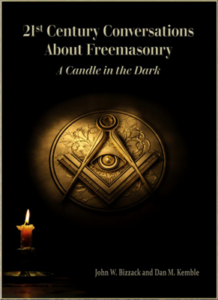Gilbert Keith Chesterton, prolific journalist, and British author, was well known for his apologetics, biographies, detective fiction, literary, social, and political commentary, and modern history. Reviews of his writing commonly note his mastery of paradox, genius, and cordial and humor. Whenever possible, Chesterton made his points with popular sayings, proverbs, and allegories—first carefully turning them inside out. In 1902 the Daily News gave him a weekly opinion column, followed in 1905 by a weekly column in The Illustrated London News, for which he continued to write for the next thirty years. Many of his essays and opinion writings were published as books. Today, over one-hundred books by or about Chesterton’s writings are published.
Read MoreAs Master of William O. Ware Lodge of Research, one of the co-sponsors of this event, allow me to extend my welcome to this 10th Annual Symposium of the Masonic Restoration Foundation. For our out of state guests, please also allow me to welcome you to Kentucky. If this is your first time here, welcome to the Bluegrass. If you have been here before, welcome back.
Read MoreIn 1709, a proverb written by English poet and satirist, Alexander Pope, summarizes what many earnest-minded Masons, leaders in the Fraternity, and those we consider the most illuminated Masonic scholars have cautioned the Fraternity about since at least the early 1800s. Once the academic world began to pay attention to the phenomenon of Freemasonry as a part of social history around the mid-20th century, they, too, joined the choir. Pope’s proverb has become the troubling truth in our Fraternity, which has been so steadily expressed that it is practically qualified as a Landmark. He wrote, “A little learning is a dangerous thing.”
Read MoreTwo and half years after the end of the Civil War the Southern economic market remained bankrupt. Reconstruction of the South (1865-77) was in its infant stage. Redressing the inequities of slavery and its political, social, and economic legacy was an extremely slow process, not to mention the efforts to solve the problems arising from the readmission to the Union the eleven states that had seceded.
Read MoreIn 1820, Lexington, Kentucky was one of the largest and wealthiest towns west of the Allegheny Mountains. So cultured was its lifestyle that the city gained the nickname, “the Athens of the West.” The exceptionally warm temperatures and rainfall in the spring of 1833 left large pools of standing water in the downtown area of the community that did not yet have a sufficient sanitary water supply or run off disposal system. The town’s drinking water was soon contaminated. A brief but devastating cholera epidemic ensued.
Read MoreMasonic Perspectives is a project created by Past Masters John W. Bizzack, Ph.D. and Dan M. Kemble intended to bring the writings about controversial topics of the past in American Freemasonry and provide readers a second look and contemporary perspective on the topics to serve as a catalyst for further discussion. This project is a joint venture of Lexington Lodge No. 1, The Rubicon Masonic Society, and William O. Ware Lodge of Research, Covington, Kentucky.
Read MoreIn 1716, almost two centuries after the seeds of Freemasonry were sown, there emerged a supposed need to have a body to govern and regulate the conduct of Masonry in Lodges. This idea culminated in the formation of the Premier Grand Lodge of England on St. John the Baptist’s day in 1717, and Our Grand Experiment began.
This assemblage immediately began to define acceptable conduct for the Grand Lodge and its subordinate Lodges. Many of these regulations are still recognizable today.
Read MoreIn December 1943 the last major offensive of World War II by the German Army took place in southern Belgium near the town of Bastogne. Twenty-five German Divisions made up of 200,000 soldiers and supported by nearly 1,000 heavy tanks, executed a surprise attack on Allied Forces. The battlefield became a seventy-five-mile stretch thick forest held by four inexperienced and battle-worn American divisions stationed there for rest and seasoning. The Germans broke through the American frontlines surrounding most of an infantry division, seizing key crossroads, and advancing their spearheads toward the Meuse River. This created a bulge in the line established by the Allies, thus giving history the name of what was to follow the Battle of the Bulge.
Read MoreThe word “fib” extends back to the 1400s or so. At that time, the word fable had its first appearance in the English language and had two meanings: a pleasant narrative or a downright lie. We still use that word in either sense. About 300 or 400 years ago, some unknown parent decided to soften the blow of the word by accusing their child of telling a “fibble-fable” when the child was caught telling a story the parent knew to be utter nonsense. This term caught on as an expression for a slight falsehood. Wordsmiths surmise that the term was too long to use as a name for a “slight sin,” so it soon shortened to “fib.”
Read MoreBy the time the first lodges in America had been warranted and formed, organized British Freemasonry had been in existence for no more than fifteen years. American Freemasonry did not merely take over from where the grand lodges of England, and later the grand lodges of Scotland, and Ireland left off. Freemasonry in the United States is a child of the Revolution—several generations removed from a more mature British society of the time that influenced the shape of and initial organization of Freemasonry in England. In the 1730s when Freemasonry began to appear in the colonies, it collided with local cultures and began transforming what was created in Britain into a different kind of system influenced by yet another set of cultural stimuli.
Read More

